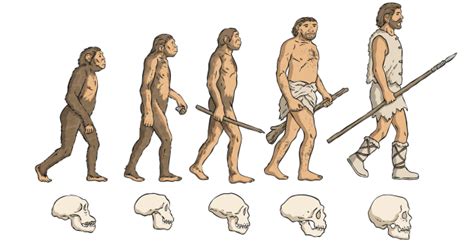The journey of human evolution is a story that stretches over a million years, and each new discovery peels back another layer of our ancient past. According to a fascinating new study, humans—or hominins—began to rapidly accumulate technological knowledge around 600,000 years ago. This transformative period is exciting not just for the evidence of advanced tool use but for what it might imply about the cognitive and cultural developments of our ancestors.
When we talk about the accumulation of technological knowledge, we are really talking about the birth of what shapes modern civilization. From fashioning stone tools to harnessing fire, these early milestones set the stage for humankind’s ongoing story of ingenuity. One intriguing aspect of this developmental leap is its possible connection to the evolution of language. As one commenter points out, the development of speech could strongly be associated with this era. It’s thought that language, with its complex structure and ability to convey intricate ideas, could have fundamentally transformed the way humans learned and transmitted knowledge.
However, the exact role of language in this technological boom remains a topic of robust debate. Several commenters have pointed out that evidence of language development is scant, and durable artifacts that might prove it are hard to come by. Even in contemporary analysis, while we can infer a lot from the fossil record—such as larger hypoglossal canals in early humans indicating advanced speech capabilities—the direct link remains speculative. What we can say with certainty is that some primitive form of communication existed that allowed these early humans to transfer knowledge effectively.
Moreover, the discussion extends beyond speech-driven knowledge transfer. One insightful commenter highlighted how cultural transmission can happen without natural language. Imagine a modern-day tech geek navigating through undocumented code to learn new tricks or an enthusiast learning mechanical hacks at a scrap yard. Prehistoric humans likely used similar hands-on learning techniques, relying on visual and demonstrative communication methods. The artifacts and tools we find today are testimonies to their inventive spirit, passed down not through speech but through action and observation.
Preservation of knowledge was another challenging hurdle. The development of writing systems was still millennia away, but humans found ways to record and communicate information. Another commenter drew attention to how societies like the Incas used knotted ropes, known as quipus, to keep records. Interestingly, some nomadic Central Asian cultures employed sophisticated methods of administration and accounting without written language for over two thousand years. They relied on robust oral traditions and physical markers to transmit vital information across generations.
One particularly compelling perspective challenges the idea that formal writing entirely supplanted speech and memory-based knowledge. According to the commenter referencing Walter J. Ong’s *Orality and Literacy*, written text transformed human culture but did not completely define it. Humans had a rich pre-literal culture, and our ancestors were adept at preserving and enhancing knowledge through oral traditions. However, with the advent of writing, technological transfer became more efficient and knowledge preservation more robust.
The longevity of transmitted knowledge is another factor shaping our progress. While some argue that robust cultural mechanisms ensured the longevity of critical knowledge, others caution about the periodic knowledge decay. Historical examples like the near-loss of the cure for scurvy highlight how misinformation can persist and lead to regression. This
problem exemplifies the constant struggle between retaining accurate knowledge and the tendency of cultures to sometimes preserve ‘wrong bits’ of knowledge, leading to social and scientific hiccups.
Finally, it is essential to understand the broader socio-cultural dynamics at play. The concept of humans building around shared beliefs and norms, often termed ‘cultural fictions’ as suggested by author Yuval Noah Harari, allowed for complex societal structures and innovations. Whether it was communal learning, collective problem-solving, or formal teachings, these shared understandings were essential for cumulative culture. The study of our technological ancestry thus becomes a multi-disciplinary exploration, drawing from archaeology, anthropology, linguistics, and cognitive sciences to construct a coherent narrative of human evolution.
As we delve deeper into our past, each discovery adds another piece to the puzzle of our origins. The rapid technological accumulation 600,000 years ago marks a significant chapter in the unfolding tale of human development, highlighting our ancestors’ remarkable ability to learn, innovate, and adapt. As this field of study progresses, future discoveries will undoubtedly continue to shed light on the intricate and fascinating journey of human evolution.


Leave a Reply